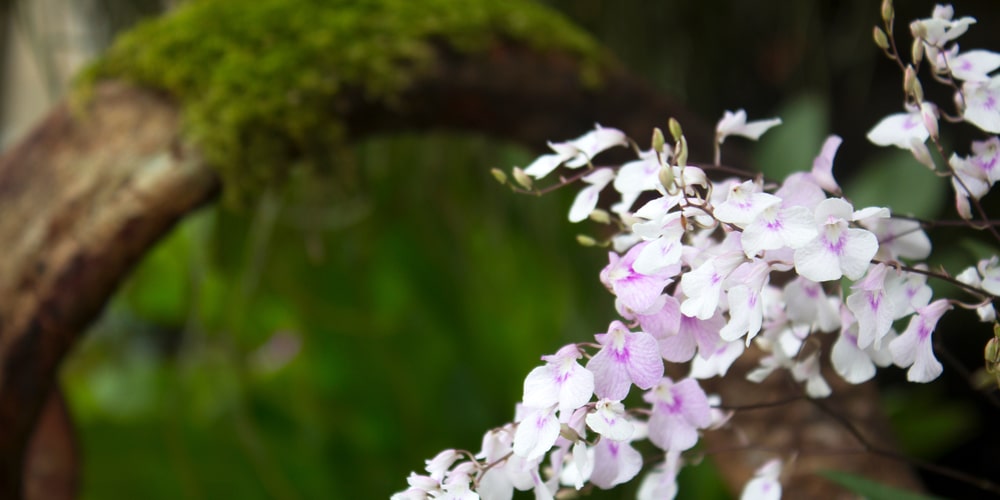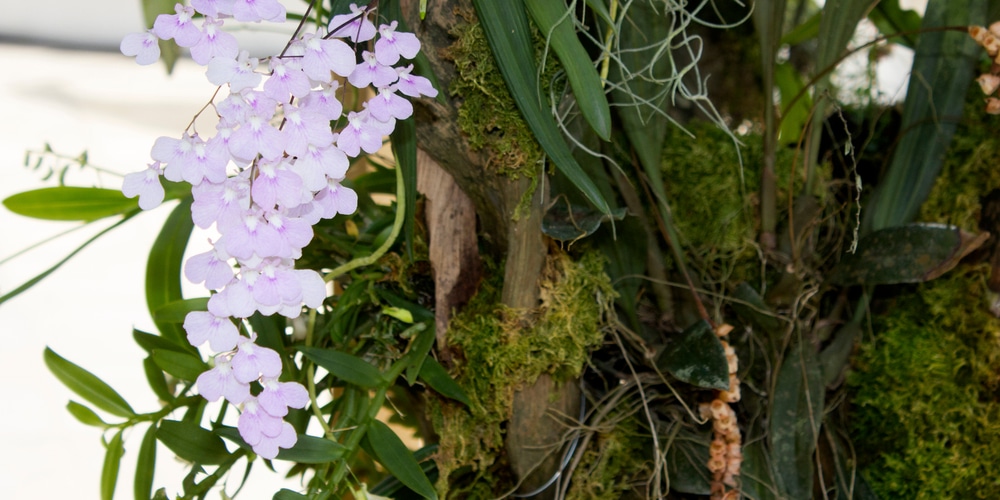Sherry Baby orchid is a hybrid of the Oncidium Jamie Sutton and Oncidium Honolulu. This flower, which grows to be about three inches tall with an eight-inch stem, has beautiful flowers that can come in many colors including white.
There’s a great deal to be said about the Sherry Baby Orchid. It may look like just another orchid in your collection, but this little plant has one major difference – it only lasts for about four weeks before its flowers fade away!
That makes them shorter than most other types of bloomers you’ll find out there on garden centers shelves today (and that doesn’t even take into consideration their mature size!).
Let’s look at how to grow and care for a Sherry Baby orchid.
What is a Sherry Baby orchid?

Sherry Baby orchids have long, slender leaves and can produce multiple flower spikes with as many as 10 to 12 flowers per inflorescence. The flowers are large and have a width of about 1 inch, and it blooms for several months. It also often branches, so you might have several flower spikes at one time.
Flowering can take place at any time during the growing season but is usually heaviest in mid-summer through late summer. Sherry baby orchids are part of the Orchidaceae family. They can be grown outdoors in USDA zones 5 to 9 but are more commonly grown as a house plant.
How to care for a Sherry Baby orchid
The chocolate orchid is relatively easy to care for as long as you get the basics right. Here are some tips to help you grow a Sherry Baby orchid:
Sunlight needs
Oncidium Sharry Baby orchids cannot tolerate much cold. They should be grown in the house near an east-facing window that receives filtered sunlight. Never place your chocolate orchid in a spot where it will receive direct sunlight, or its leaves may get sunburn. Overexposure to the sun’s UV rays can also cause the plants to wilt.
Watering requirements
Sherry Baby orchids, like the original species, prefer to dry out slightly between watering. They also do best with good air circulation, moderate humidity and should never sit in water. Most people find that they need to water their chocolate orchid once a week, although this may vary depending on the season and climate.
It is a good idea to use a pot with a well-fitting saucer that allows for drainage. The potting mix should always be moist but not soggy wet as this can cause root rot, resulting in a lack of flowering or even killing the plant.
Fertilization
Feed your Sherry Baby orchid every other week during the growing season, which is from spring through summer. You can use a general houseplant fertilizer diluted to half strength. Continue feeding until just before the first fall frost, then stop fertilizing and let the Sherry Baby rest over winter to prepare for the next growing season.
Temperature and humidity
Sherry Baby orchids, like their cousins, prefer temperatures between 70 and 80 degrees F (15-26 C) during the day and slightly colder at night. Don’t let the temperature drop below 55F or let it sit in cold drafts.
They also appreciate high humidity, which can be achieved by placing potted plants on trays of dampened pebbles or using a humidifier.
Pruning
Sherry Baby orchids do not require much pruning if kept in the right conditions. When grown in areas of low light, they may become leggy and need to be cut back.
Soil
There are many potting mixes available for container gardening which can be used to grow orchids. A good potting mix should offer good drainage, water holding capacity, and aeration for the roots of your plant. You will want a well-draining medium that does not retain too much moisture because tropical orchids do not like to have wet feet.
Some growers use only coarse fir bark, while others use moss with their soil mixture because sphagnum moss keeps the soil cool and holds water well. Sphagnum Moss is a great potting mix because it is widely available and inexpensive. It does retain moisture for long periods of time but is well aerated, which makes it good for growing healthy roots.
Fir Bark can also be added to your orchid’s pot. It is available in finely chopped pieces which help to aerate the medium and allow for good drainage. Many growers use a mixture of coarse fir bark with sphagnum moss to create their own custom blend. Some growers even add peat moss to the mixture so that it holds more moisture than pure fir bark or sphagnum moss alone.
Repotting Sherry Baby Orchids
When mature, these orchids should be repotted every year into a fresh pot. Repot them in a well-draining mix of equal parts sterilized soil mix and peat moss or fine fir bark. Alternatively, purchase a soil pre mix that has been designed especially for orchids.
Propagation
Sherry Baby Orchids can be propagated from stem cuttings by cutting a 5″ shoot, removing the lower leaves, and dipping the end into a rooting hormone. Because they grow from underground pseudobulbs, you will need to remove all the leaves from below, where it branches off from another shoot, before placing them in your rooting medium.
The best media for propagation is damp moss as it drains well, doesn’t retain too much water, and has plenty of air space for good root growth.
Pests and disease
Sherry Baby Orchids are virtually pest and disease-free. They can sometimes be affected by common insects such as aphids, mealybugs, or spider mites. If you suspect that there might be insect outbreaks on your plants, gently tap your plant all over to dislodge them. You can also spray your plant with a solution of 1 tsp mild liquid soap in a quart of water or use neem oil.
Conclusion
Sherry Baby Orchids are beautiful plants that have few requirements but need to be well-ventilated and potted in a dry media (such as high alkaline clay). They can also benefit from being out of direct sunlight, so they will have time between watering sessions before getting wet again!
If you’d like to know more, check out this article on how much orchids cost.
